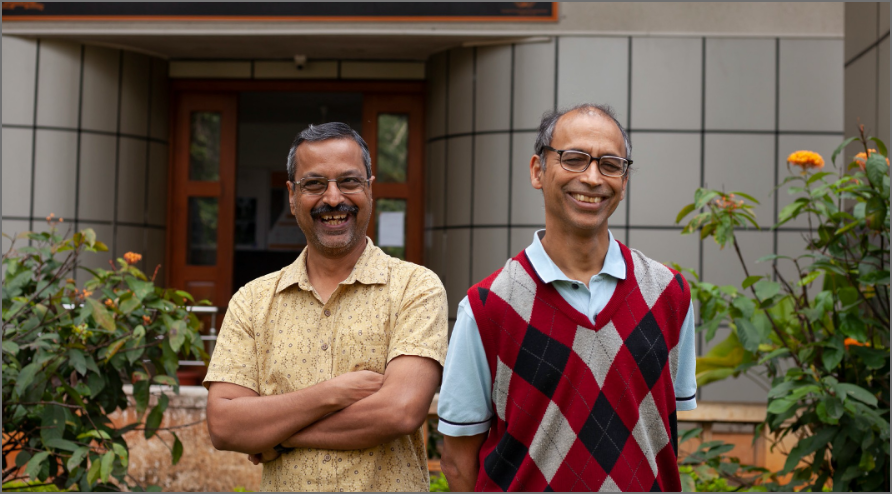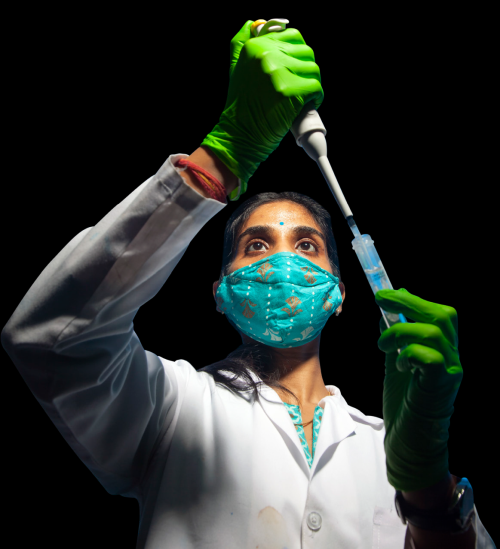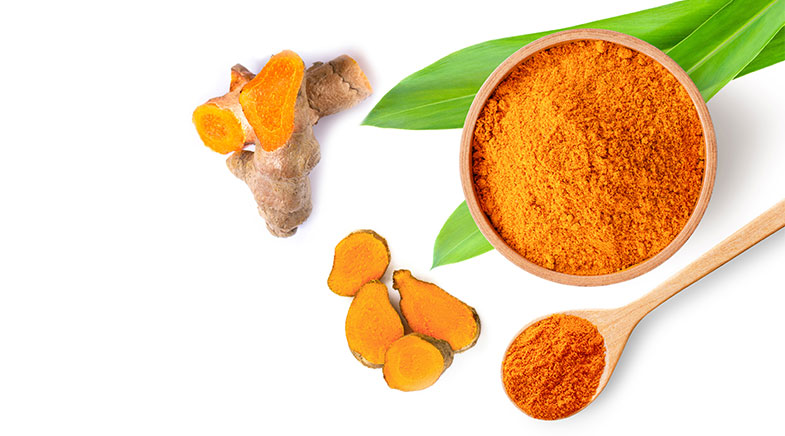This vaccine can take the heat
-
- from Shaastra :: vol 01 edition 01 :: May - Jun 2021

The Mynvax vaccine is particularly suited for Indian conditions: it is stable at high temperatures, which eliminates the need for a cold chain during transit.
IN JANUARY 2020, when COVID-19 had not yet begun to make grim news – in India and around the world – researchers at Mynvax, a biotech startup incubated at the Indian Institute of Science (IISc), Bengaluru, were immersed in work on vaccines for influenza and HIV.
For the company – which had been founded in 2017 by Gautham Nadig, a biotech entrepreneur, and Raghavan Varadarajan, a professor at IISc’s Molecular Biophysics Unit – it was bread-and-butter work, for which it had secured international recognition, including from the Bill and Melinda Gates Foundation.
But the alarming virulence and infectivity of the SARS-CoV-2 virus, which shut down economies around the world and led to a high number of fatalities, forced a compelling change in priorities, virtually overnight, for Mynvax scientists.
A scramble began worldwide to develop a vaccine to save lives and protect humans from arguably the most serious and most widespread public health hazard in over a century. And given their work in recombinant vaccine development, Mynvax researchers were thrown into the frontline of that life-saving quest.
At the urging of the Bill and Melinda Gates Foundation, which reached out to Varadarajan in late January 2020, scientists at Mynvax doubled down on the work to develop a COVID-19 vaccine. “They had visited us a short while earlier, were familiar with our work, and gave us a small amount of funding to start working on a vaccine for COVID-19,” said Varadarajan.
FRAGMENTS OF A VIRAL PROTEIN
Mynvax scientists’ approach to vaccine development relies heavily on the researchers’ understanding of protein structure. Their vaccines typically use small fragments of viral proteins to elicit an immune response in the human body.
Conventionally, scientists have used either a dead/attenuated virus, or an entire viral protein, as a vaccine. However, when researchers opt to use only a small fragment of the viral protein, they must understand the proteins of the virus well enough to be able to pick a region that can induce an optimal immune response in humans.
For the COVID-19 vaccine, the Mynvax team identified a small strand (of 200 amino acids) of the receptor-binding domain (RBD) of the spike protein of SARS-CoV-2 as the initial vaccine candidate. The team’s previous work with the influenza virus and its experience in protein engineering helped it zero in on the receptor-binding domain as the region capable of producing an immune response.
This protein fragment then had to be sequenced, and several copies of the fragment made, so that it could be tested. Towards the end of March 2020, the protein fragments were ready for the first round of animal testing. But by then, COVID-19 had acquired pandemic proportions and had triggered widespread panic, in India and around the world. Schools and colleges had shut down, and offices were encouraging employees to work from home. On March 23, 2020, on the eve of the first nationwide lockdown in India, Mynvax researchers put their protein fragments up for trial in mice.
If the COVID-19 virus mutates, the efficacy of the Mynvax vaccine will be tested. But its founders believe they are better placed to respond quickly.
Once the lockdown took effect, many research scholars at the Mynvax lab had to head back home. It was quite a challenge to conduct animal testing experiments and to collect data. Nevertheless, by April 2020, the first set of data on the efficacy of the vaccine candidate was available; the results were encouraging.
STABLE AND HEAT TOLERANT
Several follow-up tests and studies later, researchers concluded that the fragment (of 200-amino acids long) of the receptor-binding domain of SARS-CoV-2 produced an effective immune response in mice and guinea pigs, was stable, and was surprisingly heat-tolerant. In the powder form, it could tolerate temperatures as high as 100°C, and was stable for over four weeks at 37°C. They published their initial findings in the Journal of Biological Chemistry.
Vaccines like that of Mynvax, which use a small fragment of a viral protein, are called subunit vaccines. Globally, over 200 vaccine candidates are in different stages of clinical or pre-clinical development. Of these, 20 are subunit vaccines. However, none of them have been reported as being stable at high temperature, so far. Neither have any of the seven vaccine candidates in different stages of testing or rollout in India been reported as being stable at high temperatures.
This is especially important for India as a high temperature-tolerant vaccine eliminates the requirement for a cold-chain during transit.
In particular, “if the vaccine can be transported in the powder form and resolubilised at the point of vaccination, it can save an enormous amount of money – and the worry about whether the cold chain was maintained throughout the transit,” said Nadig. Though transporting in the powder form does add an extra task of resolubilising the vaccine for the healthcare worker at the point of vaccination, the advantages of doing this are “far greater,” he added.
WHAT IF THE VIRUS MUTATES
Mynvax uses a “novel approach” to design a COVID-19 vaccine, said T Jacob John, a clinical virologist and former professor at the Christian Medical College, Vellore. “And although its potential is very high, a few cautions and caveats may be in order. For instance, against a highly mutating coronavirus, will this narrow target stand the test of time with emerging virus variants with mutations in the spike protein and even the receptor-binding domain?” he wondered.
By December 2020, the first mutant variant of SARS-CoV-2, first identified in the United Kingdom, had already been recorded from India. Given that sobering reality, the question of whether the Mynvax vaccine will be effective against the new strain is a vital one. As the virus accumulates more mutations, will this vaccine perhaps prove ineffective?
Nadig agrees that as the virus mutates, the vaccine’s efficacy might be affected. But, as he points out, the answer to this problem lies in Mynvax’s unique approach to vaccine development. “Our platform allows us to do rapid changes. It is going to take longer for other types of vaccines to change. Therefore, we will be fast to respond to any mutation in the virus,” he said.
In the powder form, the Mynvax vaccine could tolerate temperatures as high as 100°C, and was stable for over four weeks at 37°C.
The Mynvax team is in the process of conducting experiments to check the efficacy of its vaccine against the mutant version of SARS-CoV-2, which was first detected in the UK. “We don’t know for sure what the outcome of these experiments will be. However, I will say that there is a good chance it will work,” said Varadarajan. Eventually, as more mutations accumulate in the virus, an alteration in the vaccine may be required.
Varadarajan compares this to the influenza vaccines that are modified on a yearly basis. Each year, the World Health Organization (WHO) predicts the mutations that are likely to happen in the influenza virus and provides recommendations on the nature of the components that that year’s influenza vaccine should contain. The vaccine manufacturers then modify the vaccine based on WHO’s recommendations. “The mutation rate of the coronavirus is a little less than that of the influenza virus. So, we don’t expect that there will have to be annual updation of the vaccine, but only time will tell,” said Varadarajan.
THE ROAD AHEAD
Despite its initial success in vaccine development, Mynvax has run into financial challenges. Without access to adequate funds, it is not possible for it to conduct safety studies and trials. The company has raised some funds from its investors, but it needs more to go further. It is also expecting some government grants, but there is not much clarity on precisely when the grant money will come through.
“Vaccine development is a risky proposition, given that we don’t know what the vaccine landscape will be in the future,” said Varadarajan. “Therefore, government funding is required to take this forward. The whole process needs to be derisked,” he added.
“If we are able to secure adequate funding, we should be able to start our clinical trials in ten months,” said Nadig.
The shortage of funds has slowed down progress at Mynvax, for sure, but it has secured a lifeline of sorts. The company has entered into an agreement with a large vaccine manufacturer, which can help it produce the vaccine at scale, so that it can initiate the trials. (Since the agreement is bound by confidentiality, the researchers were unwilling to share the name of the vaccine manufacturer.) Additionally, the lessons learnt in translating the laboratory research into a market-ready COVID vaccine will also prove useful for the company’s influenza vaccine programme.
“When the HIV pandemic hit, research in Immunology flourished. With the SARS-CoV-2 pandemic, vaccinology research is flourishing. Mynvax’s work is an excellent example of that,” said John. “This research must certainly be encouraged and financially supported,” he added.
Have a
story idea?
Tell us.
Do you have a recent research paper or an idea for a science/technology-themed article that you'd like to tell us about?
GET IN TOUCH















